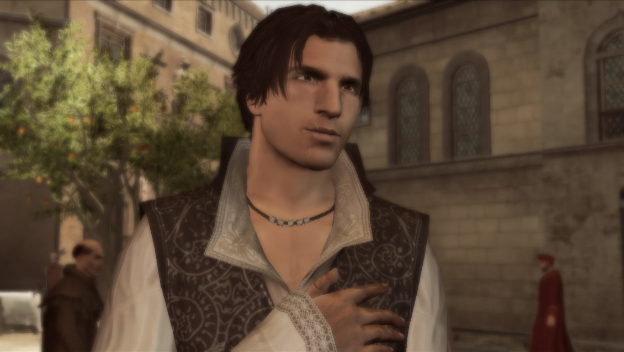The characterization of men and women in media is often limited to sexualization, especially in the main characters of video games. Such reliance on sexualization to create a character is lazy and does not belong in games such as Assassin’s Creed and Tomb Raider .
Of course, men are sexualized in an entirely different manner than women. Men are often considered “sexy” the moment they are in some way traditionally feminine. As, traditionally-coded “sexy” male characters are “sexy” via their vanity, their attention to personal attire, etc. In this way, their status of being “sexy” is founded on their ability to perform as an object of sexual desire ( Paste Magazine ). “Sexy” becomes the epitome of their character and who they are as a person. A good example of this would be Ezio from the Assassin’s Creed series. Ezio is the main character of three games in the series and his main appeal is his sexiness. Not only can this man slice and dice with the grace of a ballet dancer, but he can win the ladies over by purring in that lovely Italian accent. Ezio’s vanity is displayed in his impeccable personal appearance and otherwise feminine looks. His hair is not the famous number two buzzcut, it is long locks that fall into his very pretty brown eyes. Even his body is more slender and lithe than the stereotypically masculine build of Kratos from the God of War series.
The depth of Ezio as a character, however, falls short of his good looks. We have no idea what his likes and dislikes are other than his sister and the Templars, respectively. Even then, these attributes are signalled by combat situations and missions, not social interaction. The fact that we followed him through four games and this is all we know about Ezio as a person is outrageous. Does he read? Is Ezio more committed to training new assassins than doing his own missions? How does he feel about the strange visions of Altaïr in Brotherhood ? There should be plenty of room for development and learning for him, but it never happens.
Women are sexualized by the very expression of their gender. They do not have to be masculine to appear “sexy”, women simply have to exaggerate whatever social conventions identify them as women. Lara Croft, for example, before the leap to the PS3, was everything “sexy” by her naive nature, and tendency to fall victim to the villain of the game until the end of the story. Lara’s naive nature is displayed in how she acquires her information to allow the plot to move forward. She quite literally believes everything she is told, regardless of who is saying it. Luckily, nobody lies to her at such junctions, which is suspiciously convenient. Being the victim also seems to be a regular pastime of Lara’s as well. Each encounter with the villain’s forces leaves Lara physically overpowered and just barely not in need of rescue. Lara’s appearance is just as “sexy” as her nature, with large breasts, crop tops, and very tight pants.

Classic Lara’s character arc is just as blank as Ezio’s. She never grows as a person by the end of any game, or learns something new. At least, however, we know she must read and study archaeology, even if most of the games twist the information to fit their plot. The reasons behind her searches, and the plot of the games in general, are often left to vague references to her family. Lara is stubborn, but we never really know how she feels about her family. Not unlike a Cinderella adaptation, Lara’s parents are referred to as imagined entities of kindness and secrets, hiding away their reasons for disappearing from Lara’s life. We never see Lara mourn her parents, or react in any way to new information about them on her adventures beyond the desire to “get to the bottom of it.”
As the main characters of their respective games, Ezio and Lara should not be defined by their “sexiness”. There should be a great deal more to them than Lara’s chest size and Ezio’s accent. There is a time and place for sexualization, and it is not in games about assassins and treasure hunters.
Image Credit: DeTomasso
